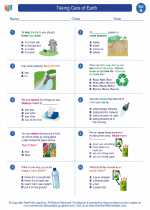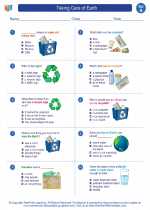Taking Care of Earth -> precipitation
Precipitation
Precipitation is a vital part of the Earth's water cycle. It refers to any form of water - liquid or solid - that falls from the atmosphere and reaches the ground. This includes rain, snow, sleet, and hail. The process of precipitation begins with the condensation of water vapor in the atmosphere, which then forms clouds. When the clouds become saturated with water droplets, precipitation occurs, and the water falls to the Earth due to the force of gravity.
Types of Precipitation
There are several types of precipitation:
- Rain: Liquid water droplets that fall from clouds when temperatures are above freezing.
- Snow: Ice crystals that form in clouds and fall to the ground when temperatures are below freezing.
- Sleet: Frozen raindrops that partially melt as they pass through a warmer layer of air before refreezing as they reach the ground.
- Hail: Large balls of ice that form in strong thunderstorms and are propelled to the ground by powerful updrafts.
Importance of Precipitation
Precipitation is essential for maintaining the Earth's water cycle and supporting life on the planet. It replenishes freshwater sources, such as lakes, rivers, and groundwater, which are necessary for drinking, agriculture, and ecosystem health. Precipitation also helps regulate the Earth's temperature and plays a crucial role in shaping the planet's landscapes over time through erosion and deposition.
Study Guide
To understand precipitation better, consider the following study guide:
- Define precipitation and explain its role in the water cycle.
- Identify and describe the different types of precipitation.
- Discuss the significance of precipitation for ecosystems and human activities.
- Examine how precipitation impacts the environment, including weather patterns and erosion.
- Conduct a hands-on experiment to demonstrate the process of precipitation using simple materials.
By exploring these topics, you can gain a comprehensive understanding of precipitation and its importance in the natural world.
.◂Science Worksheets and Study Guides First Grade. Taking Care of Earth

 Worksheet/Answer key
Worksheet/Answer key
 Worksheet/Answer key
Worksheet/Answer key
 Worksheet/Answer key
Worksheet/Answer key
 Vocabulary/Answer key
Vocabulary/Answer key
 Vocabulary/Answer key
Vocabulary/Answer key
